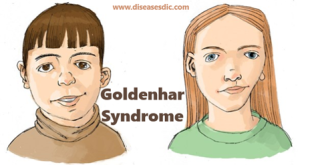Definition
Arteriovenous malformation is a congenital disorder (present from birth) characterized by a complex, tangled web of arteries and veins in which there are a short circuit and high pressure due to arterial blood flowing rapidly in the veins. An AVM may occur in the brain, brainstem or spinal cord. The most common symptoms of an AVM include hemorrhaging (bleeding), seizures, headaches and neurological problems such as paralysis or loss of speech, memory or vision. AVMs that bleed can lead to serious neurological problems and sometimes death. Still, some people have AVMs that never cause problems.
Arteriovenous Malformation
Epidemiology
United States
The detection rate in the general population based on prospective data from the New York Islands AVM Study is approximately 1.34 per 100,000 person-years. The prevalence of cerebral AVM in the United States is not known. Given the low threshold for MRI neuroimaging, many patients’ conditions are now discovered before they experience a brain haemorrhage.
International
Reported detection rates range between 0.89 and 1.24 per 100,000 person-years according to reports from Australia, Sweden, and Scotland. The prevalence of cerebral AVMs in Scotland has been estimated to be 18 per 100,000 person-years.
Types of Arteriovenous Malformation
The different types of arteriovenous malformations are:
Cavernoma: This occurs when there is an abnormal clustering of enlarged capillaries that doesn’t connect with any significant arteries or veins.
Venous Malformations: It involves clustering of enlarged veins with no connecting arteries.
Capillary Telangiectasia: This is similar to cavernoma having abnormally enlarged areas in capillaries, resembling the spoke of wheels and with no connected arteries.
Dural Arteriovenous Fistula: This happens when there is a direct connection between more than one arteries and veins into a sinus.
Risk factors
- Rarely, having a family history of AVMs may increase your risk. But most types of AVMs are not inherited.
- Certain hereditary conditions may increase your risk of AVM. These include hereditary hemorrhagic telangiectasia (HHT), also called Osler-Weber-Rendu syndrome.
Arteriovenous Malformation Causes
Arteriovenous Malformations (AVM)and venous malformations are types of vascular malformations (also called vascular anomalies). These are problems that happen when blood vessels (capillaries, arteries, veins, or lymphatic vessels) don’t develop as they should.
Doctors don’t know what causes AVMs. Kids who have them are born with them, and an AVM might get larger as the child grows.
AVMs can happen with some genetic syndromes, including:
Cobb syndrome: wine-colored birthmarks with AVMs in the spinal cord
Hereditary hemorrhagic telangiectasia (HHT): AVMs in the lungs, brain, and digestive tract
Parkes Weber syndrome: multiple AVMs in one arm or leg; the affected arm or leg typically grows longer and larger than the same limb on the other side
Wyburn-Mason syndrome (also known as Bonnet-Dechaume-Blanc syndrome): AVMs of the retina (the light-sensitive area in the back of the eye) and brain, sometimes involving part of the face
Symptoms of Arteriovenous Malformation
Symptoms of AVMs depend on where the malformation is located. AVMs have a high risk of bleeding. AVMs can get bigger as a person grows. They often get bigger during puberty, pregnancy or after a trauma or injury. A person with an AVM is at risk for pain, ulcers, bleeding and, if the AVM is large enough, heart failure.
An AVM can be mistaken for a capillary malformation (often called a “port-wine stain”) or an infantile hemangioma.
These are physical symptoms:
- Buzzing or rushing sound in the ears
- Headache- although no specific type of headache has been identified
- Backache
- Seizures
- Loss of sensation in part of the body
- Muscle weakness
- Changes in vision
- Facial paralysis
- Drooping eyelids
- Problems speaking
- Changes in sense of smell
- Problems with motion
- Dizziness
- Loss of consciousness
- Bleeding
- Pain
- Cold or blue fingers or toes
Nasal AVM in a pediatric patient
Complications
Complications may include:
- Brain damage
- Intracerebral hemorrhage
- Language difficulties
- Numbness of any part of the face or body
- Persistent headache
- Seizures
- Subarachnoid hemorrhage
- Vision changes
- Water on the brain (hydrocephalus)
- Weakness in part of the body
Possible complications of open brain surgery include:
- Brain swelling
- Hemorrhage
- Seizure
- Stroke
Diagnosis and test
The following tests may be used to diagnose your arteriovenous malformation (AVM), as well as help identify its size, location, and blood-flow pattern.
Angiography
This special X-ray exam shows the structure of a person’s blood vessels and is essential in the diagnosis and treatment planning of AVMs. During this procedure, a harmless dye that can be seen on X-rays is injected into an artery that supplies blood to the brain. The dye follows the path of the brain’s blood flow and can show any obstructions or leaks.
Angiography showing AVM Nidus
Computed Tomography (CT) Scan
With this test, X-ray beams are used to create a 3-dimensional image of the brain. A CT scan typically can detect bleeding into the brain, called a hemorrhage, which indicates an AVM.
Magnetic Resonance Angiography (MRA)
This procedure is a magnetic resonance imaging (MRI) study of the blood vessels and provides detailed images of blood vessels. Using a strong magnetic field, an MRI generates a 3-D image of the brain to detect, diagnose and aid the treatment of vascular disorders. The procedure is painless.
Treatment and medications
It depends on what type it is, the symptoms it may be causing and its location and size.
What different types of treatment are available?
Medical therapy: If there are no symptoms or almost none, or if an AVM is in an area of the brain that can’t be easily treated, conservative management may be called for. These patients are advised to avoid excessive exercise and stay away from *blood thinners like warfarin.
Surgery: If an AVM has bled and/or is in an area that can be easily accessed, then surgery may be recommended.
Stereotactic radiosurgery: An AVM that’s not too large but is in an area that’s difficult to reach by regular surgery may be treated with stereotactic radiosurgery. In this procedure, a cerebral angiogram is done to localize the AVM. Focused-beam high energy sources are then concentrated on the AVM to cause a scar and allow the AVM to “clot off.”
Interventional neuroradiology/endovascular neurosurgery: It may be possible to treat part or all of the AVM by placing a catheter (small tube) inside the blood vessels and blocking off the abnormal vessels with various materials, like glue or coils.
Prevention
There are no known ways to prevent AVMs from forming.
- Neurosurgeons/neurologists agree with specialists who recommend not smoking, maintaining a healthy diet and getting regular exercise in order to avoid high blood pressure.
- Other recommendations include avoiding blood thinners (ask your doctor before making any change in your medication), heavy lifting, and excessive alcohol.
 Diseases Treatments Dictionary This is complete solution to read all diseases treatments Which covers Prevention, Causes, Symptoms, Medical Terms, Drugs, Prescription, Natural Remedies with cures and Treatments. Most of the common diseases were listed in names, split with categories.
Diseases Treatments Dictionary This is complete solution to read all diseases treatments Which covers Prevention, Causes, Symptoms, Medical Terms, Drugs, Prescription, Natural Remedies with cures and Treatments. Most of the common diseases were listed in names, split with categories.








I wonder if its deadly…because you born with it, and it cannot be detected from the womb